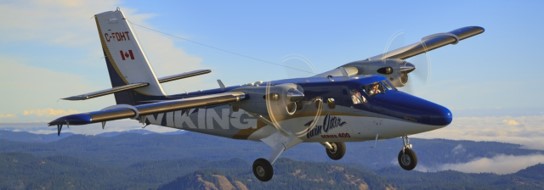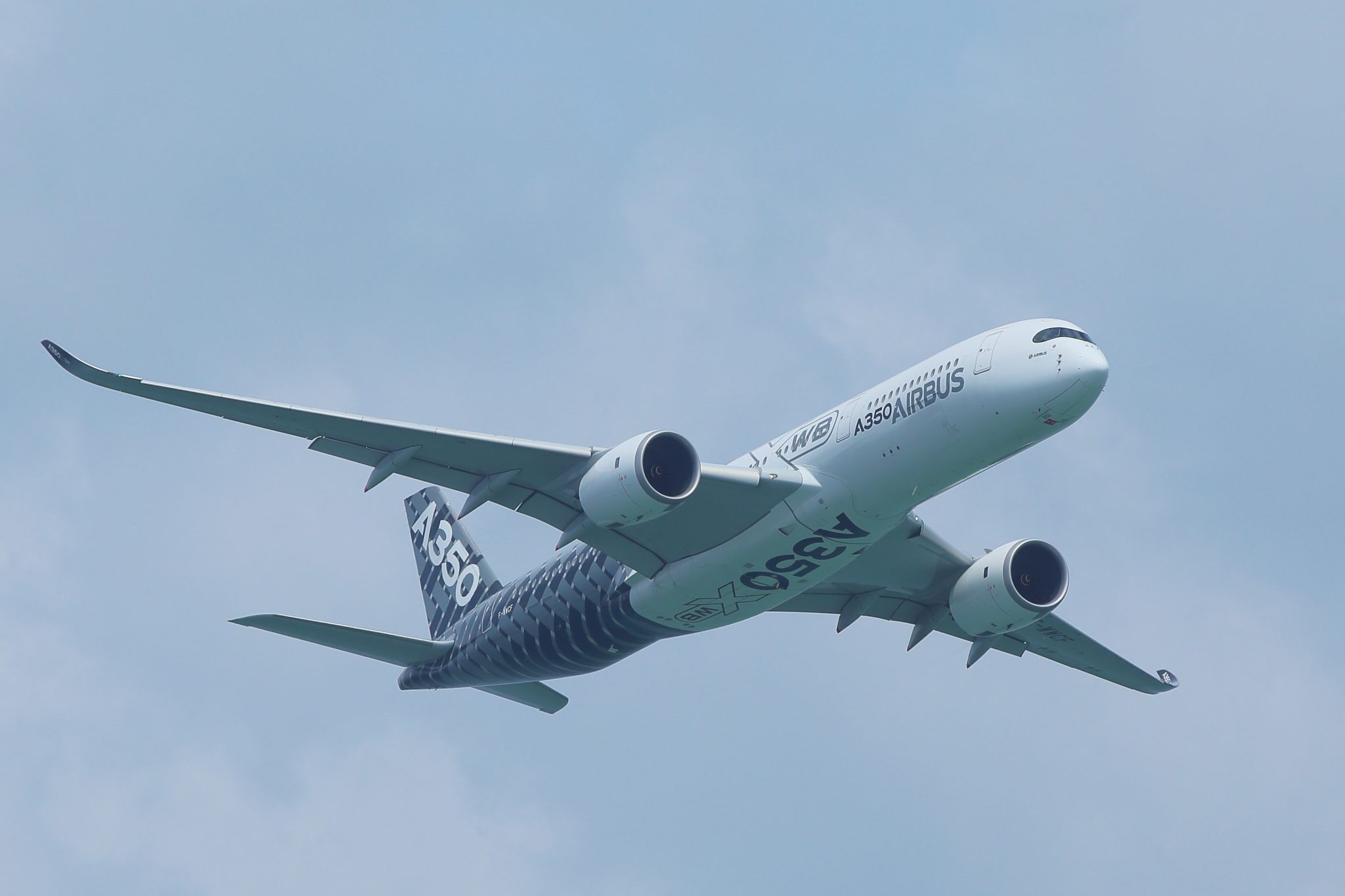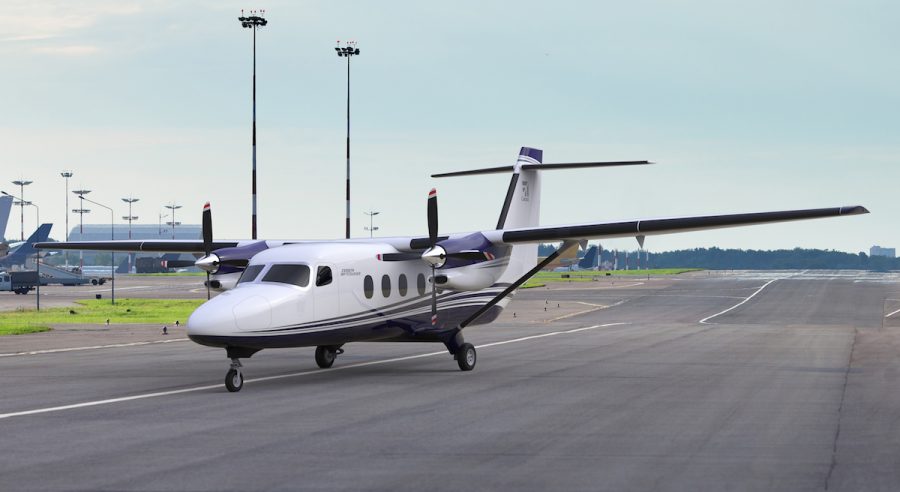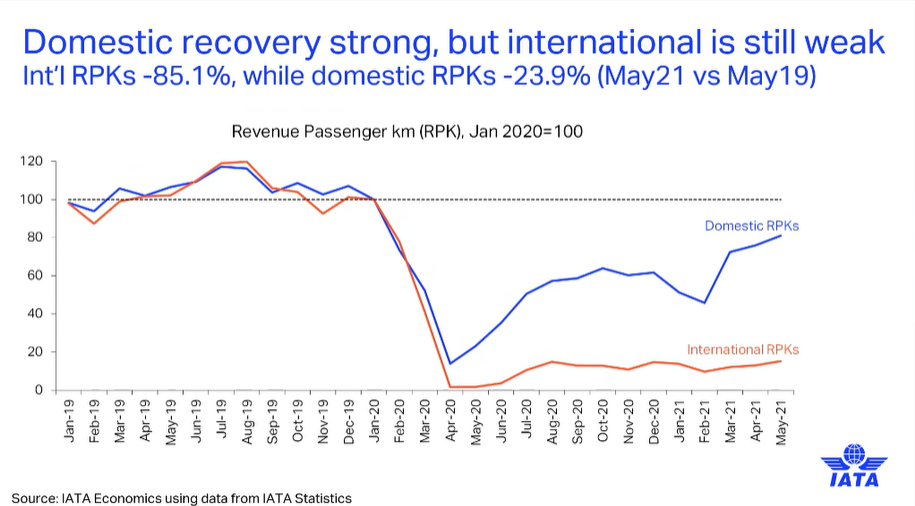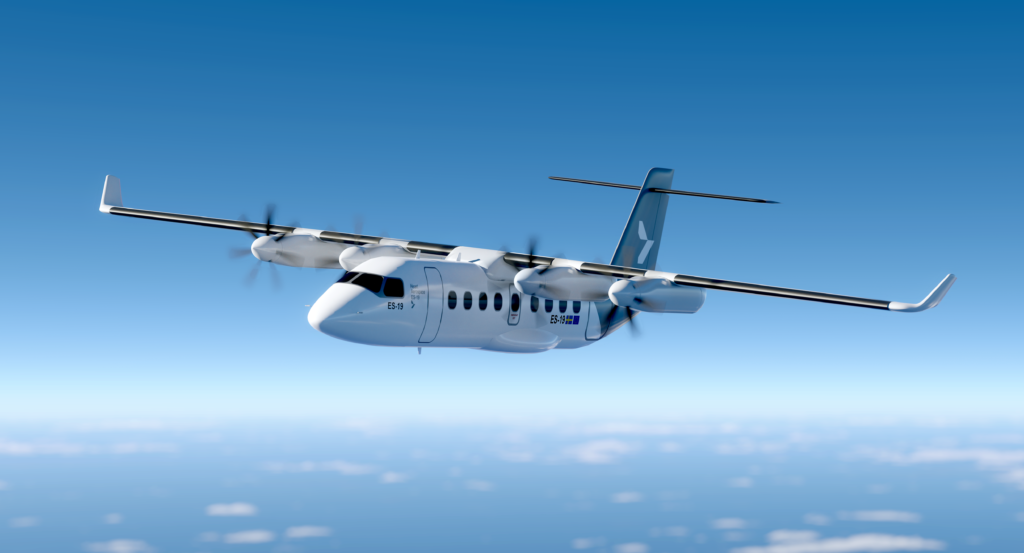Leeham News and Analysis
There's more to real news than a news release.
Bjorn’s Corner: The challenges of airliner development. Part 12. The Prelaunch Phase.
July 16, 2021, ©. Leeham News: Last week, we showed the first cut of an overall Program Plan for our 19 seat airliner project.
Now we discuss the Prelaunch Phase activities in more detail, including what type of knowledge, tools and resources we need to get on board for the project.
How good is an Airbus A350 freighter?
Subscription Required
By Bjorn Fehrm
Introduction
July 15, 2021, © Leeham News: Airbus is working on a freighter of the A350 to compete with Boeing’s larger freighters, such as the 777F.
The 777F is quite a different aircraft than the 777-200LR, which shares its external dimensions, and the 777-300ER that has donated a lot of the internal structure. So will the A350 freighter be based on the A350-900, as the rumors say, or A350-1000? And how good will it be compared to the 777F?
We use our performance model to find out.
Summary
- The A350-900 is the rumored base for the new Airbus freighter that shall compete with the Boeing 777F.
- Is it the correct assumption? When we look under the hood with our performance model, we see it isn’t.
HOTR: Boeing’s backlog market share vs Airbus falls below 40%
By the Leeham News Team
July 14, 2021, © Leeham News: Six months into 2021, Boeing is delivering 737 MAXes, clearing MAX inventory, and taking orders.
Airbus isn’t matching Boeing orders for the A320 family, so far. But as the industry struggles to return to normal, it’s worth taking a six month look at how Airbus and Boeing compare.
In terms of total backlog, Airbus has a 62% market share vs. Boeing’s 38% share.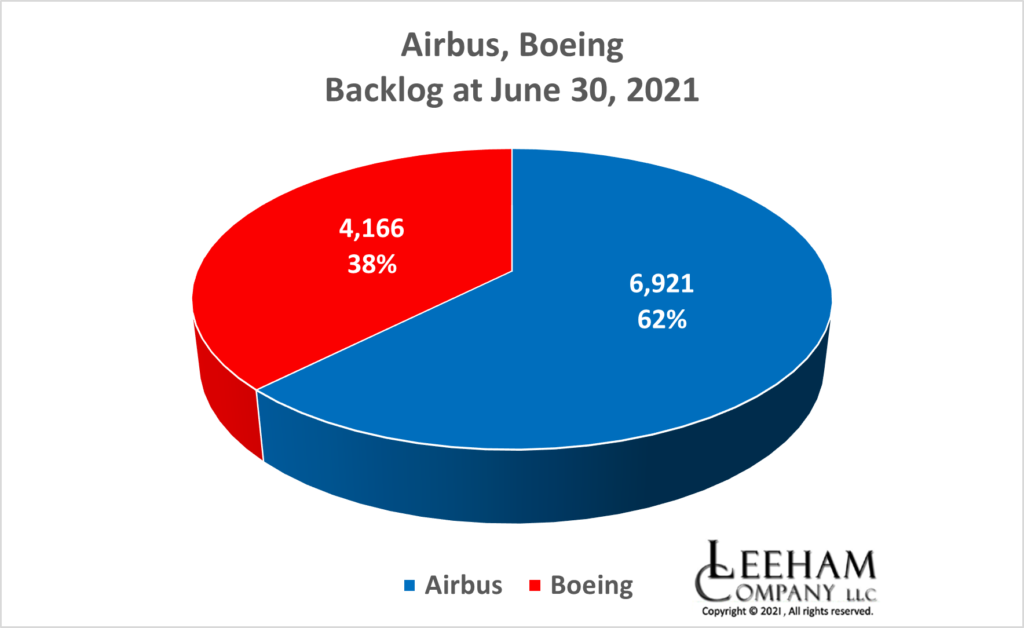
This includes all single- and twin-aisle aircraft. It also includes freighters—a Boeing exclusive right now—and air force tankers, where Boeing also has an advantage.
Airbus has a 65% share of the single-aisle backlog vs Boeing’s 35% share. Airbus includes the A220 and A320 families.
Boeing has a slim lead in the wide-body sector, boosted by its exclusive backlog in freighters and the larger backlog for the KC-46A tanker vs the A330 MRTT: 52% to 48%.
Boeing’s backlog is adjusted for the accounting rule ASC 606, which eliminates orders no longer considered firm but which aren’t canceled. Airbus doesn’t publish the European equivalent of iffy orders, so the market share is somewhat skewed. Regardless, it isn’t an encouraging picture for Boeing.
Is the Redhawk Development process the future at Boeing?
Subscription Required
By the Leeham News Team
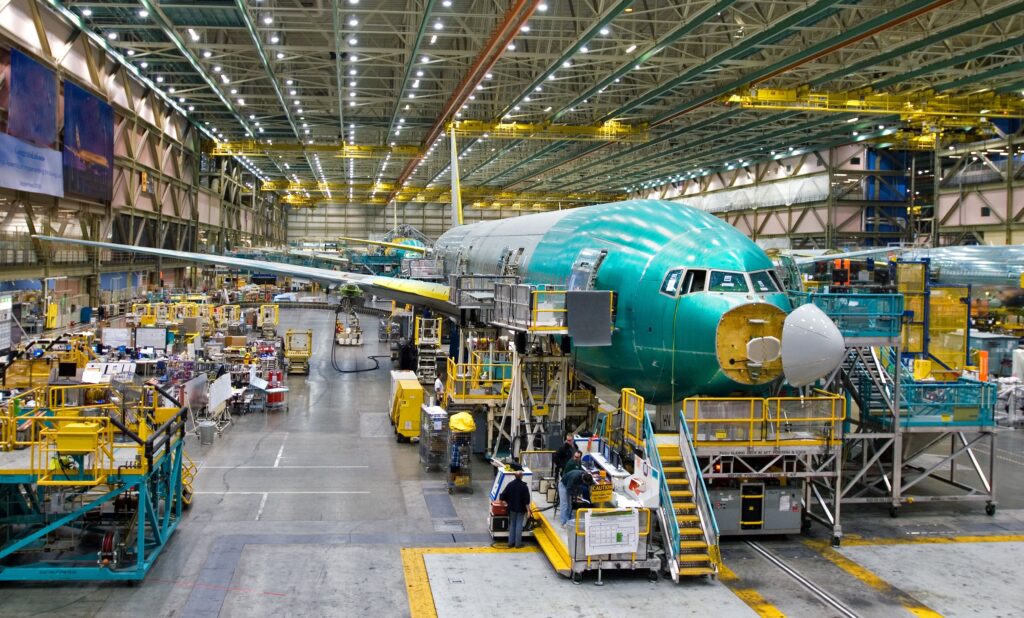
Boeing wants to converge advanced design and production processes from across the 7-Series platforms and the Defense unit into one commercial airplane–its Next Boeing Airplane, or NBA. Photo: Boeing.
July 12, 2021, © Leeham News: It may be an overstatement to say that Boeing CEO David Calhoun will be the future of Boeing Commercial Airplanes on a radical production makeover.
But it’s not an understatement to say that the production moonshot contemplated is critical to BCA.
However, advanced production processes are only part of the challenge facing Boeing. A radical shift in employee culture is also required for success.
Boeing Defense, Space & Security (BDS) is doing good things with respect to the T-7 Redhawk Trainer Integration. BDS slid the first fuselage together in 30 minutes. But the question before us is this. Is this 30 minute join process a revolutionary process change that Boeing can scale for transport category aircraft, or a byproduct of Great Hardware Variability Control in a simple non-variable end item. Fighter-sized aircraft are simple to build. Highly variable Commercial aircraft are another story completely.
Calhoun, and before him CEOs Dennis Muilenburg and Jim McNerney, would lead you to believe that some new magic occurred in the digital design and that this new magic will transfer to the next Boeing airliner and new engines are not necessary. That’s a bold position to take, so let’s look at what might be involved behind his thinking.
Pontifications: The reshaped commercial aviation sector
July 12, 2021, © Leeham News: With Washington State and the US open for business following nearly 18 months of COVID-pandemic shut-down, there is a lot of optimism in commercial aviation.
In the US, airline passenger traffic headcounts are matching or exceeding pre-pandemic TSA screening numbers. Airlines are placing orders with Airbus, Boeing and even Embraer in slowly increasing frequency.
The supply chain to these three OEMs looks forward to a return to previous production rates.
It’s great to see and even feel this optimism. But the recovery will nevertheless be a slow if steady incline.
Bjorn’s Corner: The challenges of airliner development. Part 11. The Program Plan.
July 9, 2021, ©. Leeham News: Now that we have done the basic market research we should scope the program. To do this we need to understand what aircraft we will develop and to what certification rules.
Our market research tells us to develop a 19 seat aircraft that can operate as a passenger and/or cargo aircraft outside the US and as cargo aircraft in the US. This enables us to certify it to FAA Part 23 and the equivalent rules of other National Aviation Authorities where we want to sell the aircraft.
IATA update on COVID-19 and World Travel
By Bjorn Fehrm
July 8, 2021, © Leeham News: IATA’s half-year Global Media event finished today. The Director General Willy Walsh and SVP Operations Nick Careen briefed on travel trends, ramp-up bottlenecks, and IATA travel pass activities.
At present domestic travel is recovering fast, but international travel remains weak.
The true cost of Electric Aircraft. Part 2.
Subscription Required
By Bjorn Fehrm
Introduction
July 8, 2021, © Leeham News: Last week, we looked at the cost of running an electric 19 seat airliner based on energy stored in batteries. We found the energy costs were lower than for the equivalent turboprop aircraft, but when we add the maintenance costs for the batteries, the operating costs were higher than today’s 19 seat commuter.
This was under the assumption that the battery aircraft had the same energy consumption as today’s aircraft. We now run this check. The result is eye-opening.
Summary
- Battery based aircraft weigh significantly more than jet fuel based ones. It increases their energy consumption.
- Last week’s findings were conditioned on the same energy consumption. This week’s analysis proofs this is not a valid assumption.
Here’s why China needs Boeing as much as Boeing needs China
Subscription Required
Now open to all readers.
July 7, 2021, © Leeham News: China’s government policy of operating commercial aircraft that generally are no more than 12-15 years old means the carriers face a replacement bubble that the home market can’t possibly meet.
According to data reviewed by LNA, there are just 303 COMAC C919s on order. Delivery is supposed to begin this year with one airplane. Currently, the peak year for deliveries is 2027 with 55 aircraft scheduled.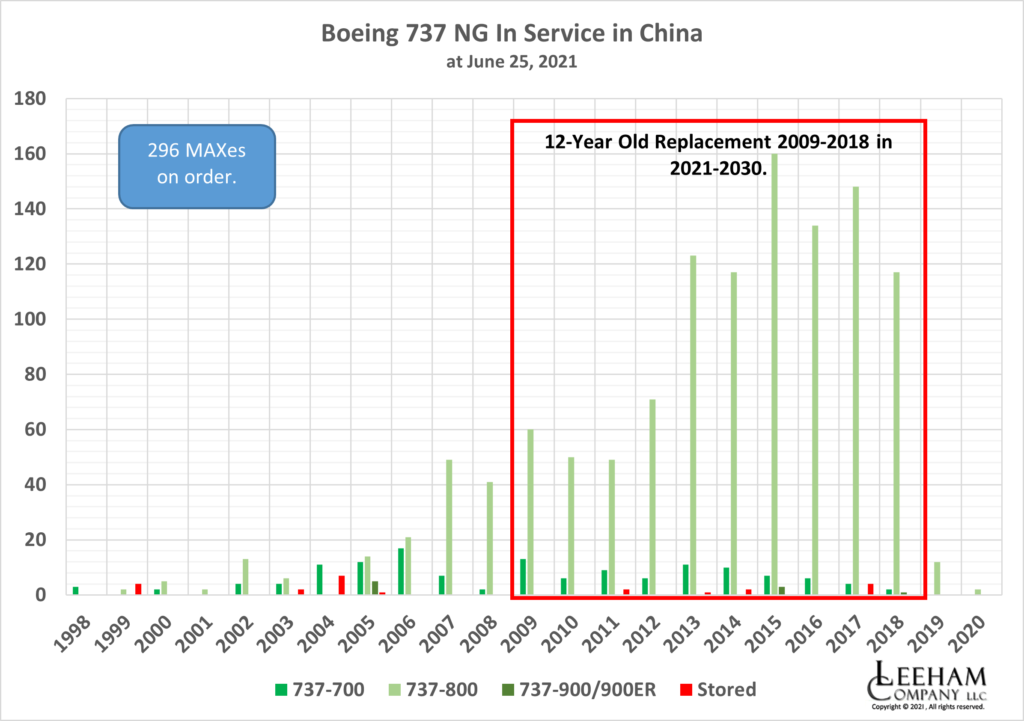
There are about 1,116 Boeing 737 NGs built between 2008-2018 operated and stored by Chinese carriers. China has just 296 737 MAXes on order—a deficit of 820 aircraft needed for replacement of these aging airplanes. (Boeing’s website shows just 104 outstanding orders, but Chinese-owned lessors aren’t included in this tally.)



